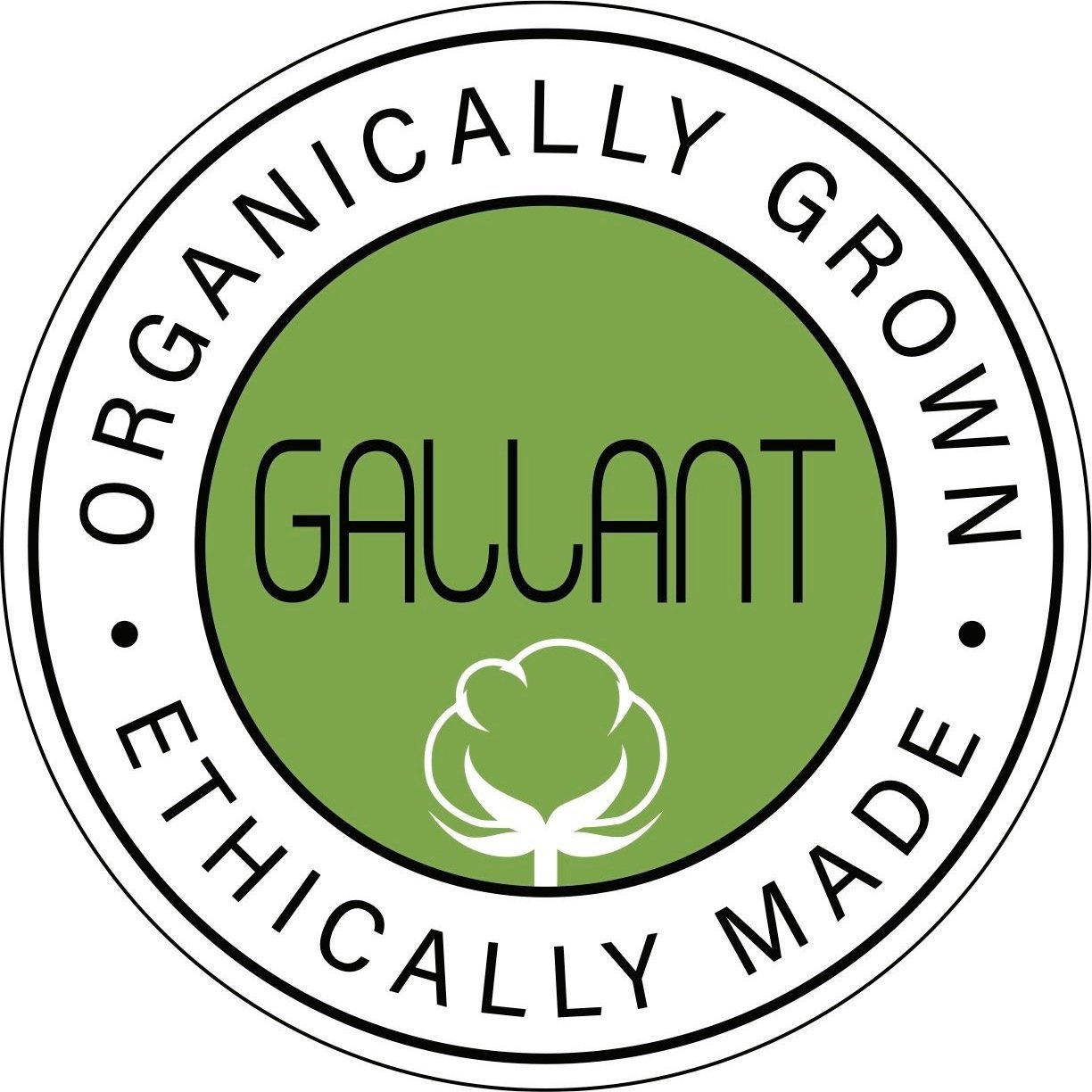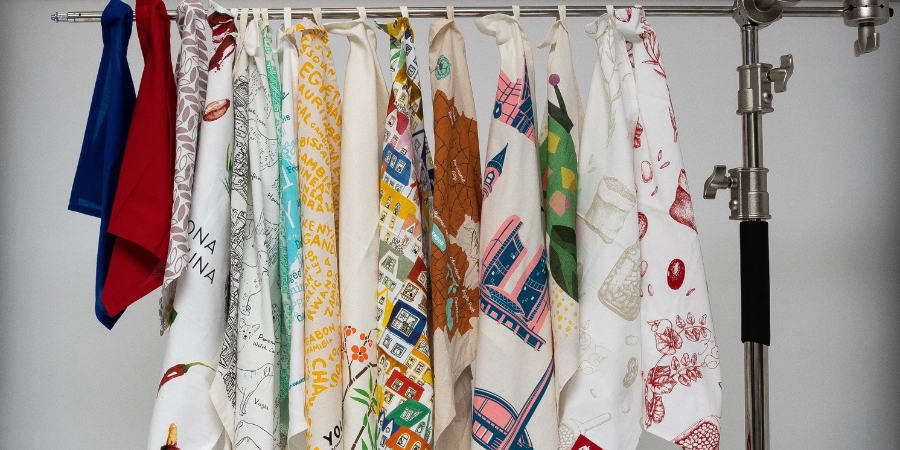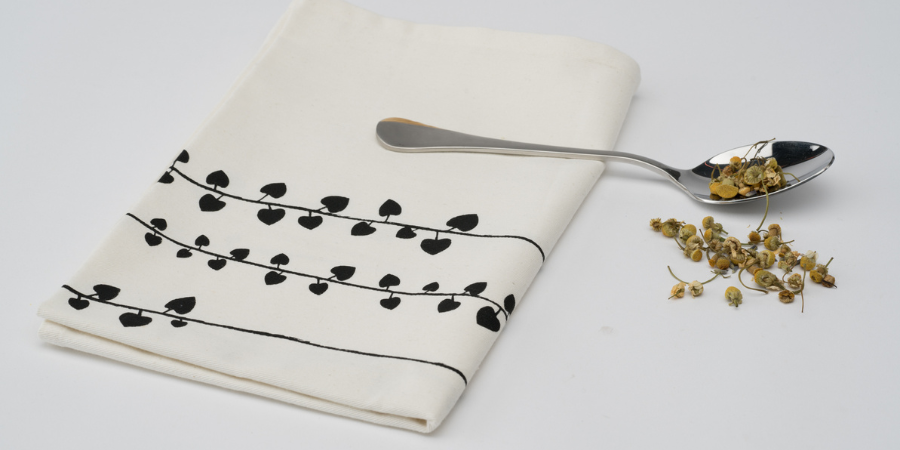What is a Tea Towel? History, Uses & Benefits Explained
What is Tea Towel?
Tea towels may not always steal the spotlight but they have stood the test of time. From afternoon tea in old English homes to modern cafés and bakeries, they’ve quietly stayed useful, stylish, and loved. So, what exactly is a tea towel?
What Are Tea Towel?
Modern printing technology has made designing tea towel patterns limitless--from bold mid-century modern to renderings of medieval castles; from snowy owls to suffragettes. If it can be drawn or photographed, it can be produced. A budding artist can stretch a white tea towel over a frame and use a A tea towel is a flat and finely woven cloth made from natural fibers such as organic cotton. It’s smooth, and not fluffy like regular towels which makes it perfect for drying glassware, covering baked goods, or polishing cutlery without leaving lint behind.
Tea towels began in 18th-century England as part of an elegant tea service, but today, they serve many roles in kitchens, restaurants, and even as gift items. Their reusability makes them a favorite in homes and businesses alike.
As more people and brands turn to sustainable options, the humble tea towel is getting fresh attention, part of a cotton towel market that’s set to grow from $4.73 billion in 2025 to $7.24 billion by 2032. Simple, reliable, and easy to love, and that’s the charm of a tea towel.
The History of Tea Towels
18th Century: The Beginning
In upper-class English families, tea was served with fine sheets, which included tea sets. These sheets were more than just delicate pieces of linen. They were used to keep teapots at a certain temperature, shield wooden furnishings, and served as pastry coverings. They were also embroidered to showcase to the guests the upper-class standards of English families. They served a purpose, but the way they were designed to serve tea illustrated the homemaker’s charm and the family’s status.
19th Century: The Shift
Due to the increase in cotton production, tea towels became more affordable with wide spread usage. Improved quality of tea towels was a result of mass weaving. The practice of tea towel decoration also increased. The increase of home chores along with the upper class family’s growing obsession with embroidery meant that the tea towels quickly became the canvas for family stories to be stitched on.
20th–21st Century: Everyday, Everywhere
These days, tea towels can be bought in fabric stores as well as in bakeries, and gift shops. They are made with organic material and come in vibrant colors, as well as custom prints. What was once a quiet household item is now a statement of style, sustainability, and craft.
Uses of Tea Towels in Modern Day
Practical Uses
Tea towels today serve many purposes far beyond their original use in tea service. In both home and professional kitchens, they have become essential tools for cleanliness, presentation, and safety.
Key Uses in Everyday Cooking
In the modern kitchen, a tea towel is more than just a drying cloth. It’s a multi-use item that supports both efficiency and hygiene.
Common Uses Include:
- Drying dishes and glassware: The smooth, lint-free surface is ideal for drying delicate items without leaving fibers behind
- Food prep coverage: Used to cover mixing bowls or wrap dough while it rests
- Drying herbs and greens: Gently pats produce dry without bruising
- Handling hot cookware: Can act as a barrier for light pots and pans
- Protecting surfaces: Provides a soft base under serving trays or dishes
In Professional Kitchens
Tea towels also play a big role in restaurant kitchens and bakeries. Chefs often rely on them throughout service.
Used for:
- Organizing ingredients: Covering or separating prepped items in the mise en place
- Cleaning equipment: Buffing stainless steel tools and surfaces without scratching
- Finishing plates: Wiping edges clean before food is served
- Controlling moisture: Managing steam and condensation during cooking or plating
In Home Decor and Interior Styling
Tea towels are now being used in modern interiors to add charm, texture, and seasonal color.
Common Decorative Uses:
- Wall Art: Framed tea towels serve as affordable and attractive artwork
- Seasonal Displays: Easily swapped out to reflect holidays or seasonal themes
- Table Settings: Used as placemats, napkins, or serving accents
- Cabinet Liners: Adds protection and visual interest to shelves or drawers
DIY and Upcycling Projects
Creative individuals and crafters often repurpose tea towels for sustainable and handmade projects.
Popular DIY Applications:
- Pillow Covers: Sewn into unique throw pillow designs
- Gift Wrapping: A reusable, eco-friendly alternative to paper
- Potpourri Sachets: Small scented bags for drawers or closets
- Quilting Projects: Adding vintage or printed towel panels to quilts and blankets
Craft and Artistic Expression
Tea towels also serve as a blank canvas for various forms of textile art.
Creative Techniques Include:
- Hand Embroidery: A timeless way to personalize a plain towel
- Fabric Painting: Great for custom gifts or home-use designs
- Block Printing: Adds handmade character through traditional printing methods
- Photo Transfer: Turning memories into fabric keepsakes
Promotional And Retail Uses
Tea towels have become a thoughtful and practical option for promotional campaigns and retail needs. Their everyday usefulness, customizability, and eco-friendly appeal make them a strong branding tool across industries.
Why Choose Tea Towels for Promotional Campaigns & Retail Needs?
Functional and Memorable: Unlike many giveaway items, tea towels are used daily, keeping your brand visible and appreciated.
Eco-Friendly Appeal: Replacing disposable materials with a reusable item sends a clear message about your commitment to sustainability.
Custom Branding: Tea towels can be easily personalized with company logos, event messages, or seasonal designs using screen printing, embroidery, or digital printing.
Common Use Cases:
- Client Thank-You Gifts: A useful, high-quality gesture that feels personal
- Employee Welcome Kits: Adds warmth to onboarding and team appreciation bundles
- Event Giveaways: A practical item for trade shows, expos, and conferences
- Festive Hampers: Easily included in holiday corporate gift boxes
- Sustainable Packaging: Used as a reusable wrap for other items in a gift set
- Addition to Retail Collection: A smart way to showcase your artwork and boost sales, perfect for retail or gift-with-purchase, especially for brands in food space
Gallant International Organic Cotton Tea Towels
At Gallant International Inc., we believe great products begin with great purpose. As a Certified B Corporation® and a leader in Organic and Regenerative Organic Certified® cotton, we’re proud to offer tea towels that stand for something.
Our tea towels are:
- Made from organic cotton
- Produced in line with the Global Organic Textile Standards
- Ethically produced in fair trade facilities
- Fully customizable for branding, gifting, or resale
- Backed by 15+ years of experience in sustainable textiles
Purpose-Driven. Planet-Focused.
We partner with brands and organizations to ensure that every item reflects their values. When you choose Gallant International, you’re supporting:
- Farmers earning a fair wage
- Supply chains marked by transparency and dignity
- Real, traceable improvements in social, environmental, and economic health
- Whether you’re sourcing towels for promotion or launching a full towel collection, our team keeps things clear and easy.
Closing Thoughts
Tea towels have journeyed from royal tea tables to every nook of modern homes and bustling kitchens. They do more than soak up moisture; they hold threads of history, skilled craft, and a pledge to the planet.
As the demand for planet-friendly, practical products rises, organic cotton tea towels stand where good looks meet good sense. Whether you’re filling a shop, outfitting a kitchen, or tucking a special gift into a tote, this simple cloth steps up—quietly, efficiently, and with purpose.
Have a design in mind?
Email your logo or artwork to gallant@gallantintl.com. And if you have a mockup, attach it—we love seeing your vision. Please ensure your file is in a vector format so we can maintain your design's crispness and clarity.




